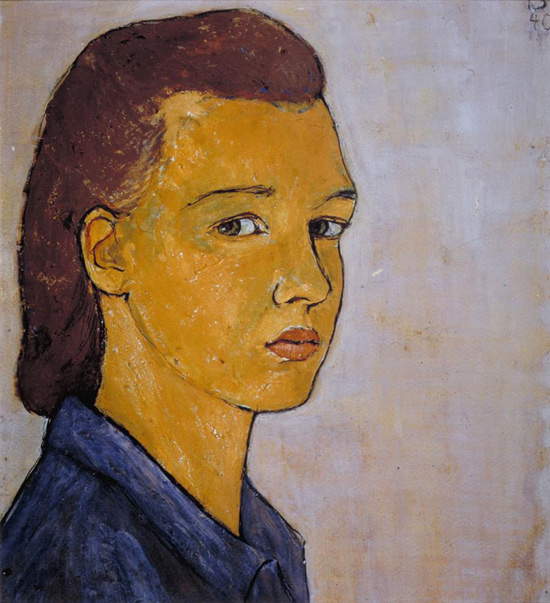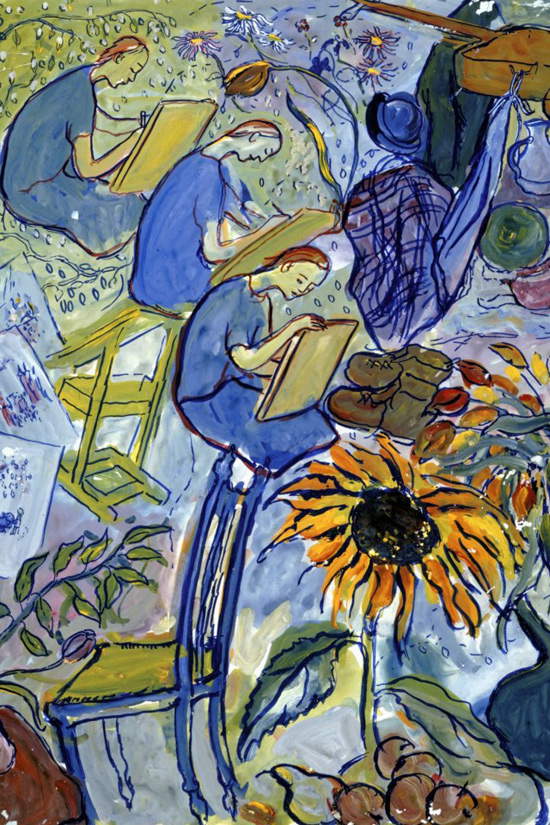Charlotte Salomon: the Jewess who took refuge in art
Today’s watchword is TO NOT FORGET. But, in essence, what must we not forget? It could probably be defined with one word: evil. The evil of wars, the evil of racism, the evil of persecution of innocent people, the evil committed out of fervent convictions with respect to unique and superior ideologies, according to many. A simple word that evokes and encapsulates the most heinous events in history, the cruelest feelings one can feel, the ugliest impulses triggered by blinding hatred. That is why we must repeat NOT TO FORGET: to ensure that this never happens again. Even if to erase hatred and evil from the face of the Earth we have not yet succeeded, unfortunately!
Everything should start from remembrance, from MEMORY. The importance of remembering and passing on the memory through documents, films, readings, and even interviews with the few survivors of the Shoah is crucial in order not to repeat the same mistakes.
It is awe-inspiring to see in the films the multitudes of people walking to their deaths or, herded onto cattle cars, inhumanely transported to the death camps; the crowds are impressive, but they are made up of individuals with their own lives and feelings. We think about how many life stories were cut short, each one different but at the same time similar to the other, and the task of remembrance is precisely not to allow the total erasure of all these, if possible.
On the occasion of Holocaust Remembrance Day, we therefore tell the story of Charlotte Salomon, a painter of German nationality, but Jewish, who died very young in the Auschwitz concentration camp.
 |
| Charlotte Salomon, Self-Portrait (1940; gouache on cardboard, 53.9x49.2 cm; Amsterdam, Joods Historisch Museum) |
Born in April 1917 in Berlin, Charlotte belonged to a wealthy family in which the women of the household, including her mother, committed suicide due to bouts of depression. She then became close with mixed feelings to her father’s partner, who was a singer, and it was through her that she discovered music, but more importantly art, sparking her passion toward this discipline. This led her to study at the National School of the Academy of Fine Arts in Berlin, but here, being Jewish, she was repeatedly discriminated against. The artistic turning point came in the wake of her grandmother’s attempted suicide: when everything seemed to be going wrong, Charlotte took refuge with all her strength in art to culminate, in 1942, in the creation of her only work Leben? Oder Theater? (Life? Or theater?).
More than a thousand paintings in which theater, music and painting are intertwined (the paintings are accompanied by writings and music) made with the gouache technique (or gouache, in French), that is, with a color similar to tempera, but with a more opaque appearance due to the addition of gesso or white lead and a gum arabic compound. In this work, the painter told her family’s story against the backdrop of Hitler’s rise to power and the beginning of racial laws and Jewish persecution. Unlike what one might think about the style, the latter is lively, joyful, as if her art were completely detached from the surrounding reality. It is precisely through art that she is able to overcome the misfortunes that befell her family, that she is able to reaffirm herself; art spurs her on, to continue living, despite the cruelties and atrocities of the period in which she lives.
Emblematic is one of her paintings belonging to Life? Or Theater?: starting from the upper left corner to the center of the painting, Charlotte depicts herself in three consecutive moments as she is drawing and painting while holding a tablet in her hands; around her revolve various objects, such as hats, chairs, shoes, musical instruments, and flowers, such as the large sunflower in the foreground. This probably indicates her unstoppable passion for painting as everything flows around her, or perhaps the objects she is drawing on the tablet are depicted. However, what is striking is that not even the slightest reference to historical reality, to the Shoah, appears in this painting.
Her life ended tragically when, together with her husband and expecting a child, she was arrested and taken to the Auschwitz concentration camp, where she died in a gas chamber at the age of only 26. Her work, which Charlotte entrusted to an American friend, is now kept at the Joods Historisch Museum in Amsterdam.
 |
| Charlotte Salomon, one of the paintings in the cycle Life? Or Theater? (ca. 1942; gouache on paper, 32.5x25 cm; Amsterdam, Joods Historisch Museum) |
Warning: the translation into English of the original Italian article was created using automatic tools. We undertake to review all articles, but we do not guarantee the total absence of inaccuracies in the translation due to the program. You can find the original by clicking on the ITA button. If you find any mistake,please contact us.





























